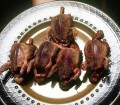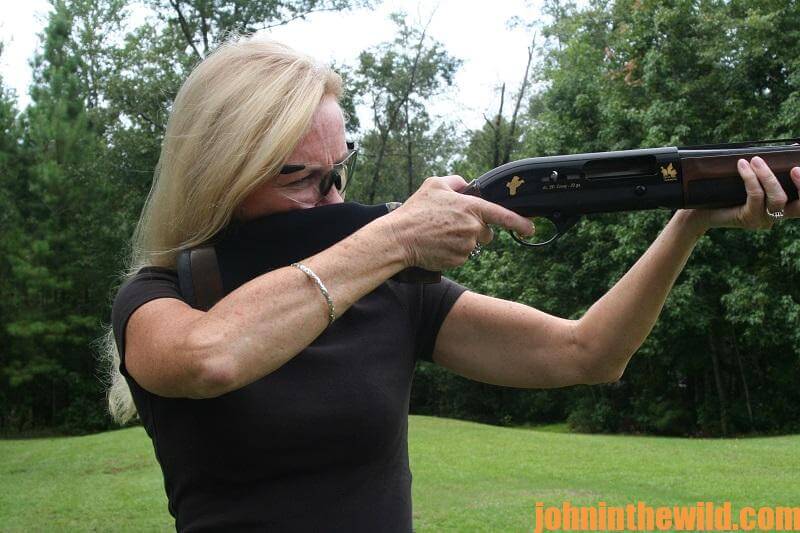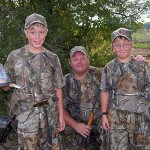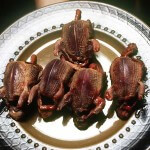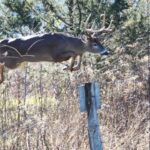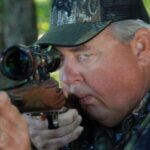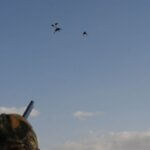John’s Note: The winged warriors from hell, also known as mourning doves, streak across the fall sky like World War II Kamikaze pilots. Their ability to dive, pitch and roll will challenge the skills of even the best wing shooters. Southerners especially enjoy the tradition of dove hunting which opens soon in many states, and probably like it as much as eating black-eyed peas, speckled butter beans, a pone of cornbread and a glass of buttermilk. But just because you go out and sweat in the hot sun of early fall, get bitten by redbugs in the grass and punctured by industrial-strength mosquitoes, you still may not take home a mess of doves. Here’s some secrets for finding and taking doves that will make this season’s gunning better than ever.
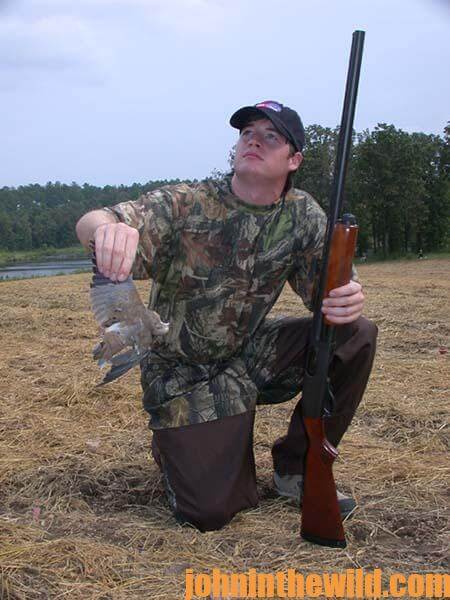 Although many hunters consider agricultural lands where farmers grow millet, wheat, highgear and grain crops the best places for locating doves, you often may find hunting water holes, graveling spots, roosting sites and flyways even more productive.
Although many hunters consider agricultural lands where farmers grow millet, wheat, highgear and grain crops the best places for locating doves, you often may find hunting water holes, graveling spots, roosting sites and flyways even more productive.
Most dove hunting in the South requires very little hunting. You simply go to a just harvested grain field, sit on the edge of the field and wait for the doves to come by your stand.
However, if you want to increase your take of birds, you must learn how, where and when to hunt. For instance, if someone plans to hold a shoot at a particular field, go to that field a day or two early. Look for the closest water supply that the birds use before they go into the field to feed. During the hot months of the early dove season, doves often will congregate around water before and after they feed. Identify which trees doves light in near that water supply. Once you’ve found the watering spot, watch the doves as they come in to water. Most often they’ll fly to a certain tree near a clean spot on the bank. They’ll probably sit in that tree for 15 or 20 minutes before they fly down to the water’s edge to drink.
Once you’ve located that tree, clear out a spot under it and plan to hunt there while all the other hunters shoot on the fields.
You need to …
* remember that doves like to find shade trees where they can loaf, dodge the heat and stay cool. During the heat of the day, often you’ll locate birds loafing in the same trees they roost in at night. Cedar trees often make productive midday loafing sites for doves.
* search for a barn, another unconventional midday hotspot, that will provide water, feed and shade for doves. However, always check with the landowner before hunting near his property.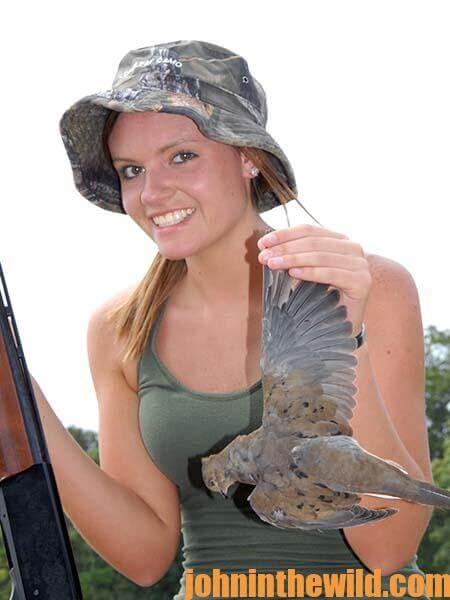
* find a tree that lightning has struck or that recently has died. Generally you’ll see a dead tree or at least a tree with few leaves on it in an area close to the edge of the field where you’ll shoot. The birds will fly into this tree to look over the field before they decide to fly down into the field.
* never overlook major flyways. Doves have highways in the sky that they travel back and forth to and through the fields where they feed. By watching the doves a day or two before the hunt, you can learn the birds’ flight pattern and take a stand along that flyaway. Then you can bag doves before they reach the field or after they leave the field.
* pinpoint graveling regions that the doves fly into to pick up the gravel for their craws. To digest their food, doves must have grit for their craws.
* hunt in the middle of a field. Jim Porter, a Mississippi veteran dove hunter and skeet-and-trap shooter, long associated with Mossy Oak Camouflage, enjoys hunting in a small blind in the middle of a field. “A lot of people take stands along tree lines to hunt doves,” Porter says. “The doves will fly over the tree lines and often won’t come out over the field. So, you either don’t see the doves, or if you shoot one, it will fall back in the woods, which makes the dove harder to find. I’d rather get 30 or 40 yards out in the field and fix up a little blind where I can see the doves better.” Porter prefers to set up with the sun at his back, either in the morning or in the afternoon. “If I get in a dove field early in the morning, I don’t like to set up facing the east, because the sun will get in my eyes and cause me problems,” Porter explains. “I also don’t like to face the west in the afternoon for the same reason.”
look for natural variances in a field, a tree line, a hedge line or anything out of the norm, because the birds will tend to fly to those places.
*Build a blind in the field with naturally available materials. “If you can, stand up a cornstalk, some ragweed or anything around you to help break up your outline some,” Porter emphasizes.
* locate doves in spots along railroad tracks where they can get gravel. But don’t hunt on the railroad track or the track’s right-of-way. Only hunt the private land that you have permission to hunt adjacent to the right-of-way.
hunt in a freshly mown hay field with a large amount of grass seed where you’ll have the chance to spot plenty of doves.
*Also, doves usually will swarm any place where farmers feed cattle corn or grain, and you’ll rarely see another hunter. Again, make sure you have the permission of the landowner before you hunt these kinds of places.
 * hunt beneath power lines. For some reason, doves like to congregate on power lines. If you study the birds long enough, you’ll notice that the doves usually have one spot on a power line that they like to fly to more than any other place. Take a stand near that power line, and wait for the birds to come in to where you’ve set up. These out-of-the-way, often overlooked dove hotspots will pay dove dividends for you that big-field hunters never will experience.
* hunt beneath power lines. For some reason, doves like to congregate on power lines. If you study the birds long enough, you’ll notice that the doves usually have one spot on a power line that they like to fly to more than any other place. Take a stand near that power line, and wait for the birds to come in to where you’ve set up. These out-of-the-way, often overlooked dove hotspots will pay dove dividends for you that big-field hunters never will experience.
To get the Kindle e-cookbook “The Best Wild Game & Seafood Cookbook Ever: 350 Southern Recipes for Deer, Turkey, Fish, Seafood, Small Game and Birds” by John and Denise Phillips, click on the title, or visit www.amazon.com/kindle-ebooks, search for the title you want, and download it to your Kindle, or download a Kindle app for your iPad, SmartPhone or computer.
About the Author
John Phillips, winner of the 2012 Homer Circle Fishing Award for outstanding fishing writer by the American Sportfishing Association (ASA) and the Professional Outdoor Media Association (POMA), the 2008 Crossbow Communicator of the year and the 2007 Legendary Communicator chosen for induction into the National Fresh Water Hall of Fame, is a freelance writer (over 6,000 magazine articles for about 100 magazines and several thousand newspaper columns published), magazine editor, photographer for print media as well as industry catalogues (over 25,000 photos published), lecturer, outdoor consultant, marketing consultant, book author and daily internet content provider with an overview of the outdoors.

